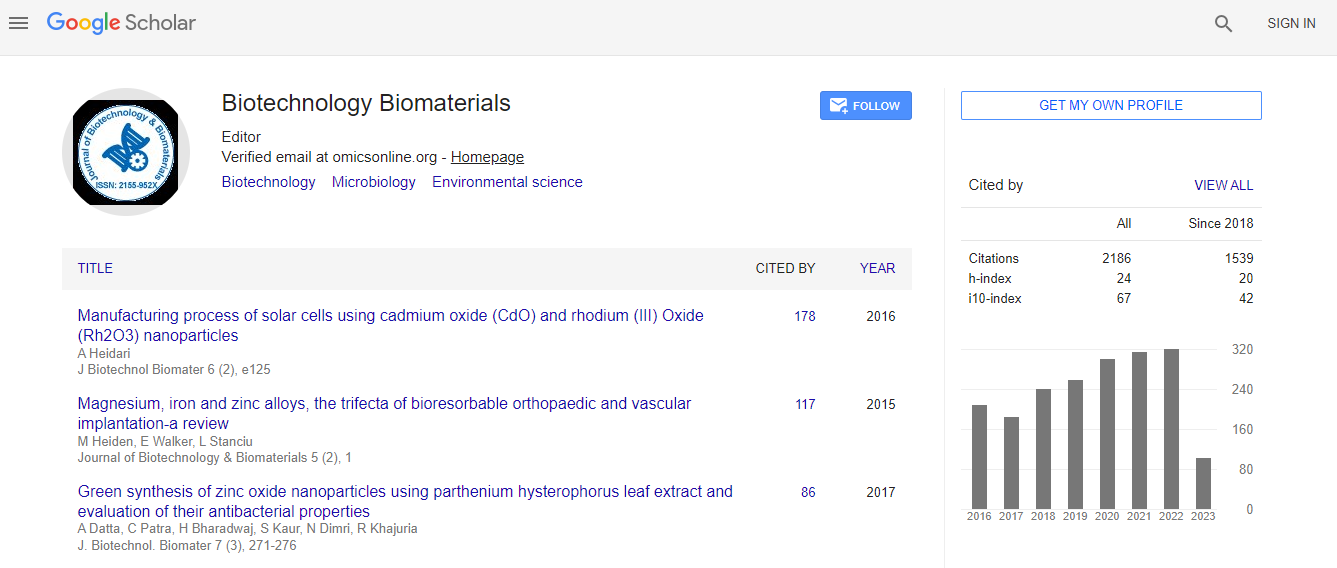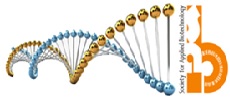Our Group organises 3000+ Global Conferenceseries Events every year across USA, Europe & Asia with support from 1000 more scientific Societies and Publishes 700+ Open Access Journals which contains over 50000 eminent personalities, reputed scientists as editorial board members.
Open Access Journals gaining more Readers and Citations
700 Journals and 15,000,000 Readers Each Journal is getting 25,000+ Readers
Google Scholar citation report
Citations : 3330
Journal of Biotechnology & Biomaterials received 3330 citations as per Google Scholar report
Indexed In
- Index Copernicus
- Google Scholar
- Sherpa Romeo
- Open J Gate
- Genamics JournalSeek
- Academic Keys
- ResearchBible
- China National Knowledge Infrastructure (CNKI)
- Access to Global Online Research in Agriculture (AGORA)
- Electronic Journals Library
- RefSeek
- Hamdard University
- EBSCO A-Z
- OCLC- WorldCat
- SWB online catalog
- Virtual Library of Biology (vifabio)
- Publons
- Geneva Foundation for Medical Education and Research
- Euro Pub
- ICMJE
Useful Links
Recommended Journals
Related Subjects
Share This Page
The cellular location of endo-acting galactanases confers keystone or recipient status to arabinogalactan degrading organisms of the human gut microbiota
4th International Conference on Advances in Biotechnology and Bioscience
Jose Munoz
Northumbria University, UK
Posters & Accepted Abstracts: J Biotechnol Biomater
Abstract
Glycans, the major source of energy for the human gut microbiota (HGM), are metabolized primarily by the Bacteroides genus. Arabinogalactan proteins (AGPs) are a higher heterogenous group of plant glycans in which the β1, 3-galactan backbone and β1, 6-galactan side chains are conserved features. Diversity is provided by the extensive and highly variable nature of the sugars that decorate both the backbone and side chain galactans. The mechanisms by which nutritionally relevant AGPs are degraded at a cellular and biochemical level are poorly understood, as is the impact of this process on the ecology of the HGM. To address these issues we have explored how the HGM organism Bacteroides thetaiotaomicron metabolizes highly complex AGPs. The work provides a degradative model that reveals a repertoire of exo-acting family GH43 β1, 3-galactanases that release backbone galactose units that are attached at O6 to the side chains. The oligosaccharide side chains are depolymerized by the synergistic action of exo-acting enzymes in which catalytic interactions is dependent on whether degradation is initiated by a lyase or glycoside hydrolase. Growth studies of the 20 HGM Bacteroides species on a complex AGP revealed three keystone organisms that facilitated utilization of fragments of the glycan by the 17 other bacteria, which thus acted as recipients. The ability to function as a keystone organism was conferred by a surface endo-β1, 3-galactanase, which, when engineered into a recipient enabled the bacterium to also utilize complex AGPs and facilitate the growth of the other Bacteroides species. This study underpins future pre- and pro-biotic strategies to exploit AGPs to manipulate the structure of the HGM.Biography
E-mail: jlmunoz@um.es

 Spanish
Spanish  Chinese
Chinese  Russian
Russian  German
German  French
French  Japanese
Japanese  Portuguese
Portuguese  Hindi
Hindi 
